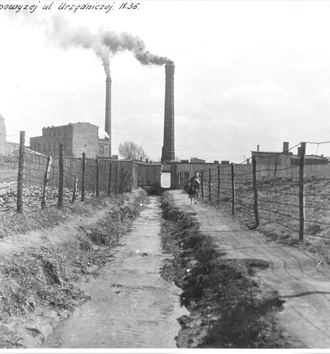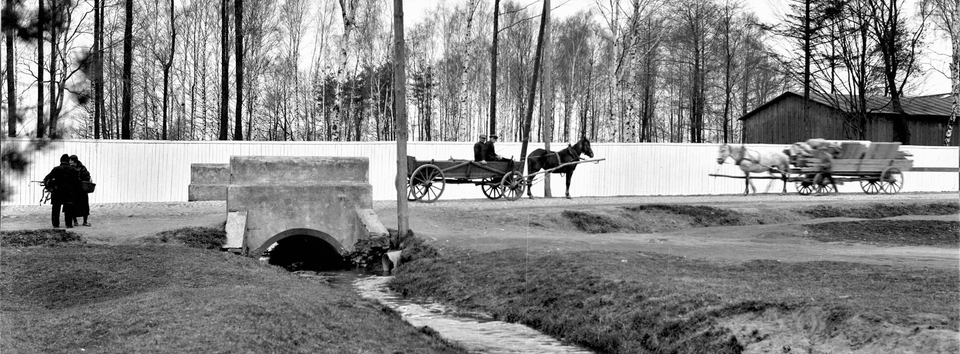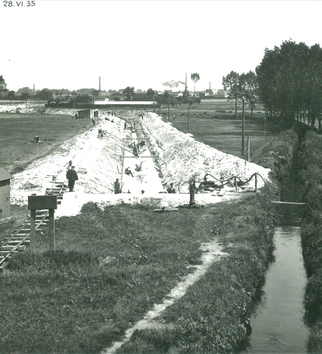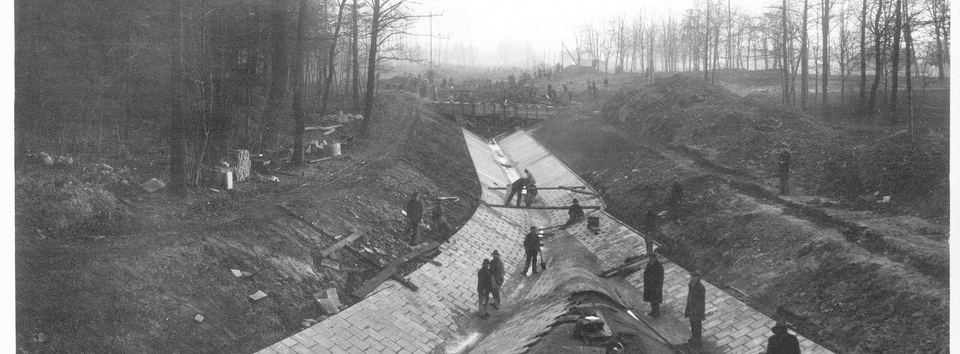The abuse use by, among others, textile industry of water resources, massive deforestation and the growing impermeable area of the city have led to a decrease in groundwater levels and the disappearance of natural springs. However, traces of the source areas of Lodz rivers can still be found in Lodz
Biologists from the University of Lodz remind us of the rivers of Lodz
Natural rivers were turned into sewers, they were concreted and hidden underground. In many parts of our city, the trace of them has disappeared. Unfortunately, it has also disappeared from the minds of the residents...
As part of the series, film and text materials will be produced, presenting the forgotten sources of Lodz rivers. The main goal of the cooperation between the two institutions is to restore the memory of rivers and their sources.
Paweł Jarosiewicz, doctoral student from the Department of UNESCO Chair on Ecohydrology and Applied Ecology at the Faculty of Biology and Environmental Protection, University of Lodz, takes the floor in the first article.
The first step towards recovering the rivers of Lodz is to increase the knowledge of the residents of Lodz about the occurrence of river valleys as well as source areas which, as a result of changes in the hydrological cycle, have been cut off from the supply by shallow layers of groundwater.
says Paweł Jarosiewicz, Faculty of Biology and Environmental Protection, University of Lodz.
In the face of the changing climate, resulting in long periods of drought, the phenomenon of the urban heat island, as well as more frequent occurrence of torrential rainfall – small city rivers are experiencing their renaissance. Where possible, efforts are made to restore riverbeds and renaturalise them so that they could support the process of cities' adaptation to global warming. This process is especially difficult in cities that have practically forgotten about their rivers.
adds the eco-hydrologist.
At the beginning, we will recall the history of Bałutka
Bałutka, also known as Jamnica, Solówka or Suljanka, is a former border stream that separated the lands of the village of Radogoszcz from Bałuty and Żubardź. Nowadays, Bałutka separates Żubradź from Żabieniec and Złotno and Teofilów from Zdrowie. Today, Bałutka can be seen at the intersection of Włókniarzy Avenue with Wielkopolska (about 4 km from its former sources). It flows from the underground storm sewer towards Złotno. Currently, it only carries drainage and filtration water, and also receives rainwater and water from melting snow.
Which way did the Bałutka river flow?
From the intersection of Górnicza and Sporna, the Balutka stream flowed towards the Szarych Szeregi Park, and its valley can be seen in the hollows of the streets: Złotnicza, Franciszkańska, Młynarska, Łagiewnicka (at the former Helena Wolf Hospital), Zgierska (at Dolna) or Hipoteczna (at Radłowa). The street names come from the river: Dolna (it runs in the valley of the river) and Mokra (at Mokra Bałutka crossed the present Limanowskiego street). Struga ends its course in Park at Zdrowie, where it flows into the Łódka River.
Few people know that Bałutka was also an industrial stream. Factory sewage was discharged to it from, among others, textile plants at Dolna, Zgierska, Drukarska, Urzędnicza, Polna, Sierakowskiego and Hipoteczna Streets. The river also received sewage from Bałuty Slaughterhouse (now MPO ŁÓDŹ area) and from three breweries.
The river tributaries
Bałutka had a dozen or so small tributaries – the largest in the streets: Marysińska, Łagiewnicka, Zgierska, Limanowskiego, Wielkopolska, and Siewna. There was an inflow from the area of the present allotment gardens between Kwiatowa, Plantowa and Rabatkowa Streets. Another one crossed Krakowska Street above Biegunowa Street.
The river was regulated and partially hidden in an underground sewer in the 1930s. In the archives of ZWiK there are photos from the time of its regulation. The decision to close Bałutka in the underground sewer was made for sanitary reasons – the authorities of the time wanted to cover the river that carried household and factory sewage.
Unfortunately, a similar fate befell many rivers that were victims of the industrial revolution and the mechanistic vision of the world with unlimited access to resources.
Today, this approach is being replaced by a new evolutionary and ecosystem understanding of natural resources, which is developed, inter alia, by eco-hydrologists from the University of Lodz.
Source: Paweł Jarosiewicz UL, ZWiK Łódź, photos: Archive of ZWiK Łódź;






